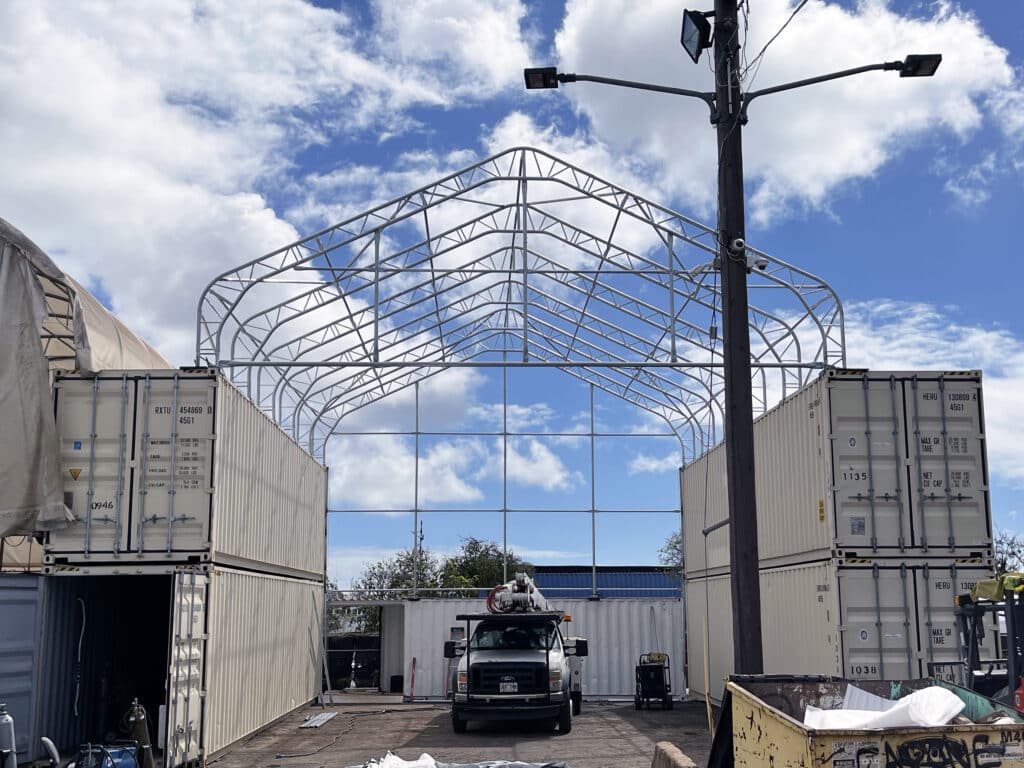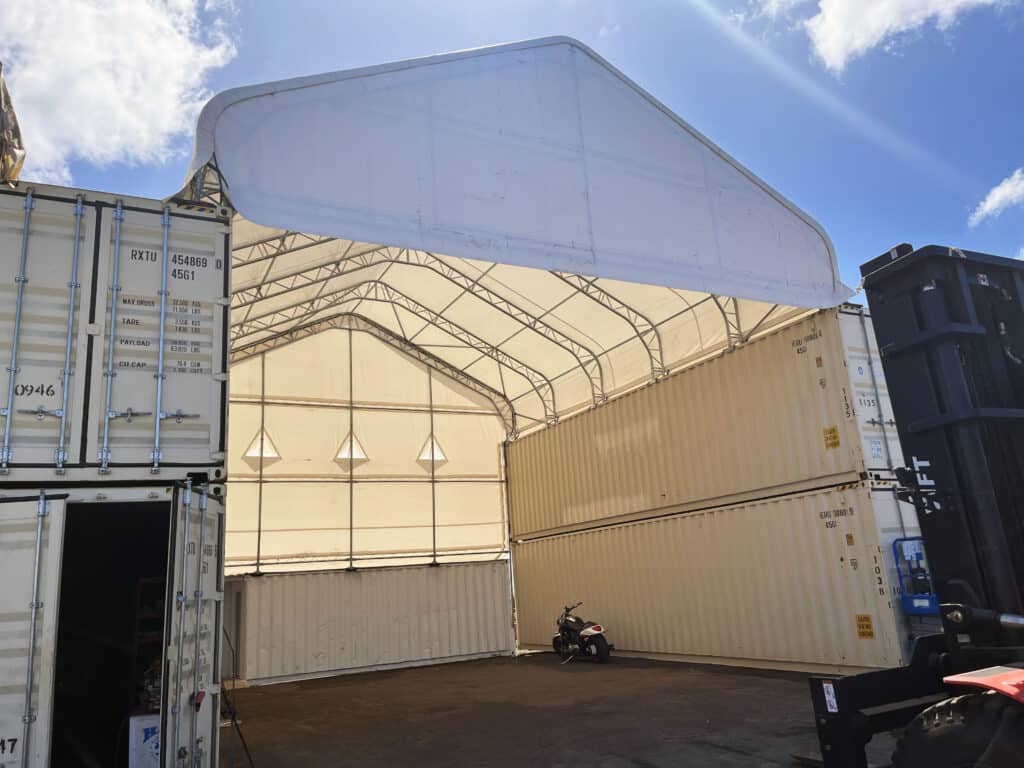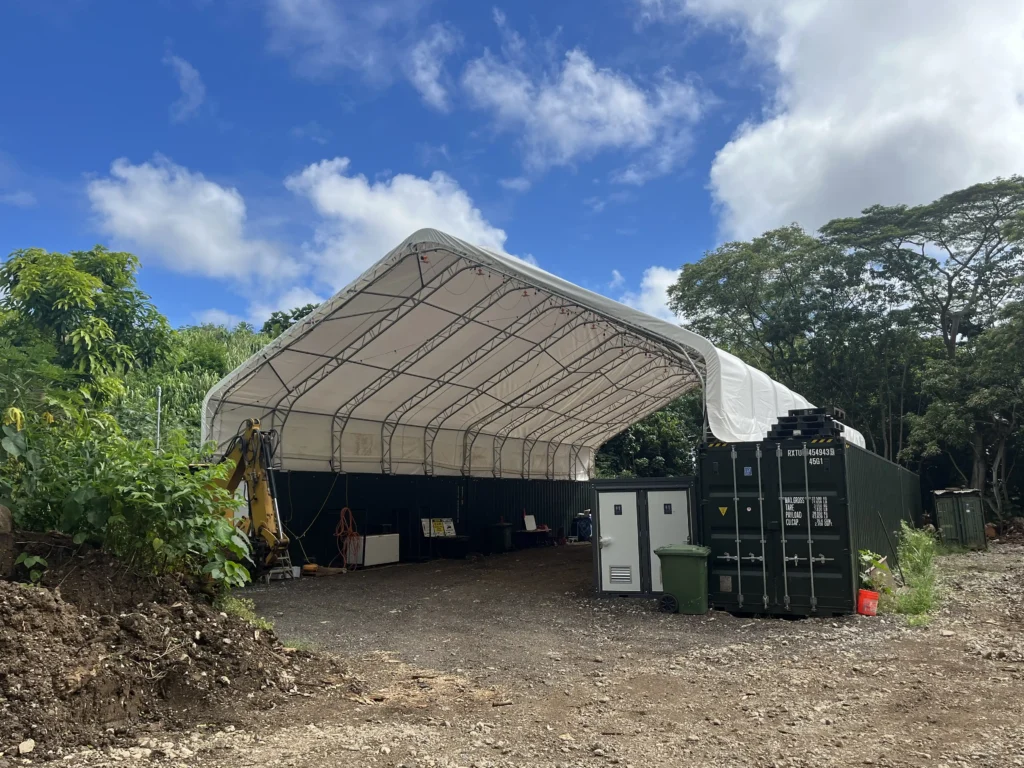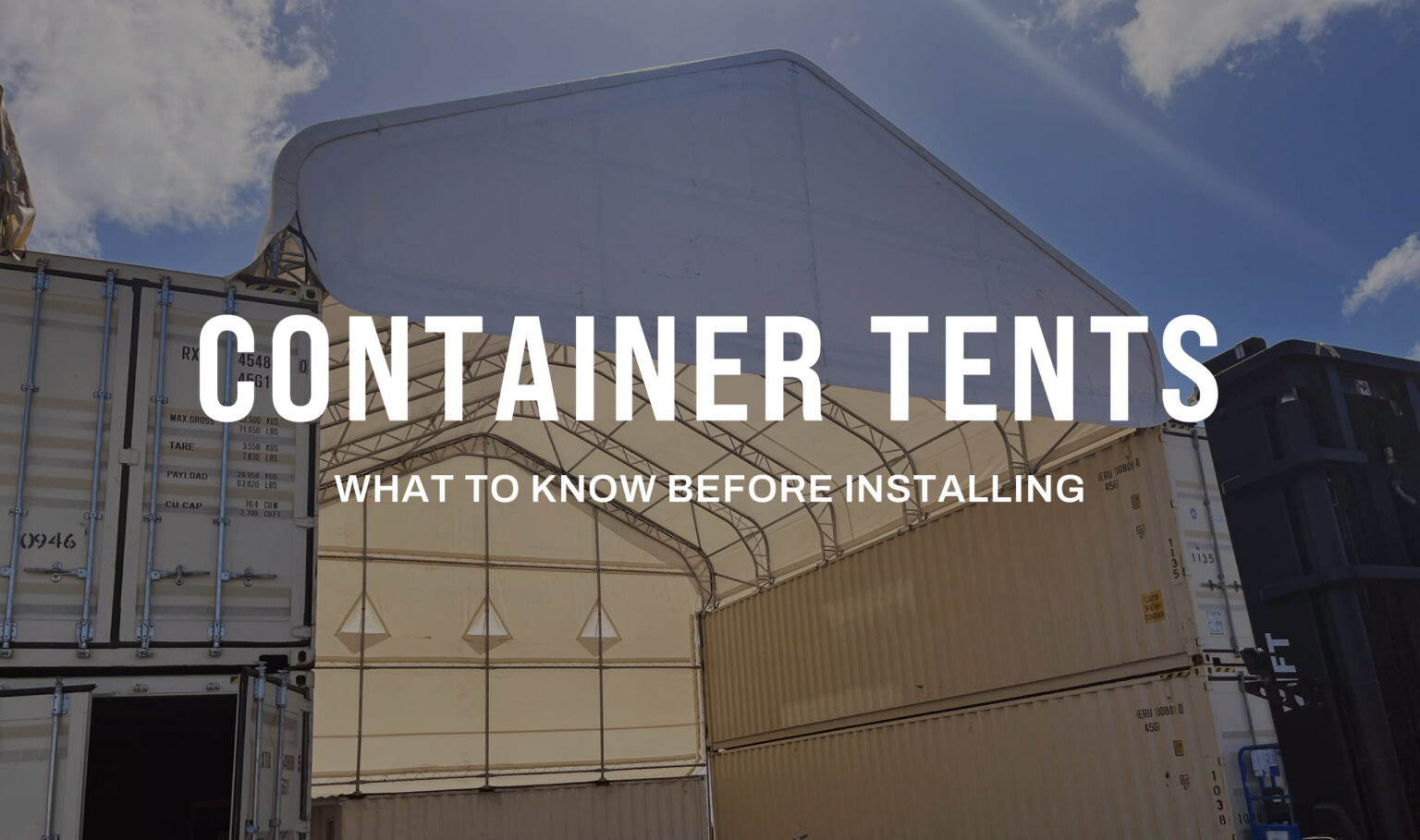Container tents are a great way to create a reliable, covered space for outdoor operations in Hawaii. They are versatile, durable, and ideal for a range of uses, including storage, workspaces, or event setups. However, before you purchase and install a container tent, there are a few things you need to know to make the process smooth and successful.

Here’s what you need to consider:
1. Welding Is Required
Container tents require a secure attachment to the containers they rest on. This means welding is necessary to fix the base plates of the frame to the edges of the containers. These base plates come included with your purchase, but you’ll need access to a welder or hire a professional for the installation.
Welding is essential to ensure the tent is stable and safe for long-term use, especially in Hawaii’s outdoor conditions. Be sure to plan for this step when preparing for installation.
2. Remove Covers During Windstorms
While container tents are designed to handle most weather conditions in Hawaii, the fabric covers must be removed during windstorms with speeds over 55 mph. The galvanized steel frame can stay in place, but removing the cover will prevent damage.
Taking this precaution will help protect your investment and keep your tent in good condition.
3. Unloading Requires Equipment
Container tents are heavy, and unloading them requires a forklift or similar equipment. For instance, the 20’x20′ container tent weighs 697 lbs, while the 40’x40’x13′ model weighs over 2,250 lbs.
If you don’t have access to unloading equipment, let us know ahead of time. We can help you arrange for the proper tools or assistance to ensure a smooth delivery.
4. Installation Services Available on Oahu
If you’re in Hawaii and located on Oahu, and you’re unable to install the container tent yourself, we can help. HIWASTE MFG offers professional installation services to make the process simple and hassle-free.
Our team will handle everything from welding the base plates to assembling the frame, so you can focus on using your new space.
5. Check Local Regulations
Permits are not always required for container tents in Hawaii, but it depends on local rules and the intended use. To avoid potential issues, we recommend checking with the Department of Planning and Permitting (DPP) or your local council.
Getting approval in advance will save you time and help you avoid fines or scrutiny later.
6. Choose the Right Size for Your Needs
Container tents come in different sizes to fit a variety of needs:
- 20’x20’x6’7″: Perfect for small-scale operations or storage in Hawaii.
- 20’x40’x10′: A mid-sized option for larger equipment or projects.
- 40’x40’x13′: Ideal for expansive spaces like workshops or multi-purpose areas.
Consider the size of your property and the specific purpose of the tent to choose the right model for your needs. Be sure to account for clearance, access points, and leveling before installation.
7. A Crane May Be Needed for Installation
All of our container tents are built with single truss tubes, which are heavy and require precise handling during assembly. Installing these tubes to create the frame often requires a crane or similar lifting equipment to ensure safety and efficiency during the process.
If you don’t have access to the necessary equipment, let us know, and we can help coordinate the tools or services needed. Proper planning will ensure a smooth and safe installation process.


Conclusion
Installing a container tent in Hawaii is a smart way to create a functional outdoor space. However, preparation is key. From securing welding services and unloading equipment to considering local regulations and windstorm precautions, these steps will ensure your setup is seamless.
Ready to get started? Visit hiwastemfg.com/container-tents to view our options, send us a message, or call us at 808-478-2613 for more information. If you’re on Oahu, ask about our professional installation services to make the process even easier!
View Shipping Containers In Hawaii
- Choosing the Right Size Container Tent for Your Needs
- Use Case: How HIWASTE MFG Uses Container Tents
- What to Know Before Installing a Container Tent on Your Property
- Container Tents: The Ideal Solution for Outdoor Operations
- Portable Restrooms vs. Traditional Porta Potties: Choosing the Right Sanitation Solution

